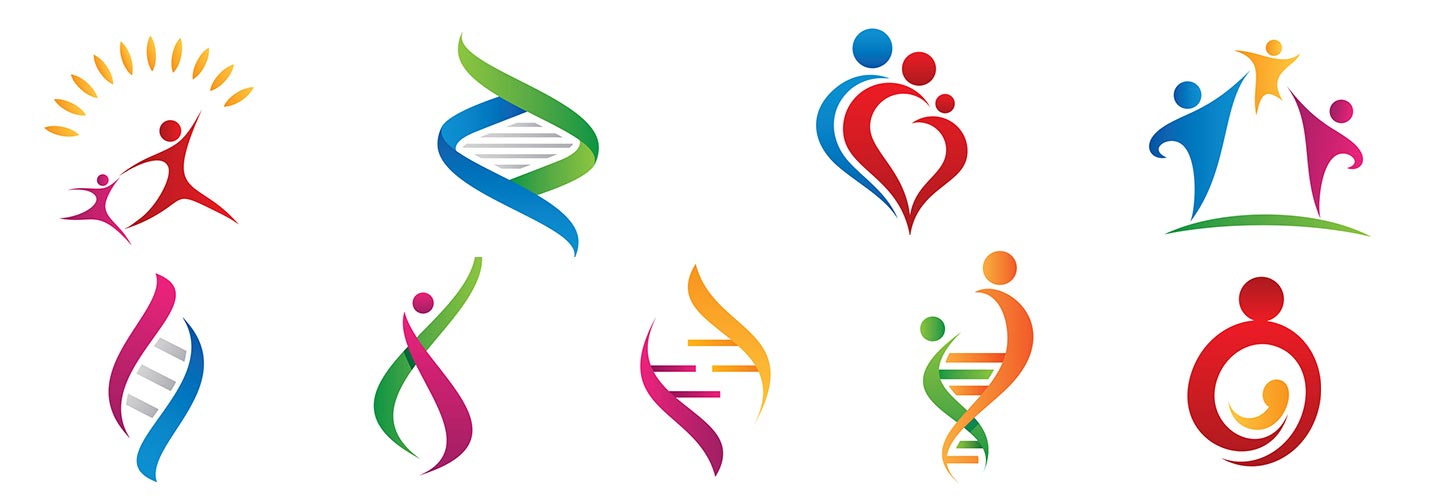DNA… Nurture Your Nature – Session Three
- Home
- Blog

Epigenetics, Emotional Equilibrium, and Equanimity!
DNA+Environment+Triggers+Chance = Cellular Equilibrium vs. Dysequilibrium
“Nurture the Nature” of Your “Cellular Equanimity” through Actionable DNA Testing– Bruce Alan Kehr, M.D.
In my years on this Earth, I’ve found that the summer months can be a blessing in so many ways. Living in the Mid-Atlantic, I’ll never cease to feel grateful for those first few weeks of hot, brilliant sunshine, especially after a long winter. At the same time, summer is also the height of travel season—with school out for the summer, in years past my kids and wife and I would often make the most of our weekends with swimming parties filled with their frolic, overnights with the grandparents, and more—not to mention our annual summer vacations. Summer is when lasting memories are made… a beautiful blessing! But after a few weeks of keeping up this pace, at times, something would feel off inside me, bringing with it a kind of anxiety. After years of feeling puzzled, I finally deduced: this feeling would develop from a loss of equilibrium—a loss of routine, of my fiercely driven habits and schedule (and throw in some dehydration, dietary indiscretions, and jet lag!). Without my “steady state” I felt off-balance – had lost my “homeostasis.” You see, reader, the 37 trillion cells in each of our bodies crave homeostasis at every level: from my body and brain finding comfort in looking at my monthly planner after a long vacation, to the numerous biological systems within my body, which when ”disrupted” do whatever they can to return to normalcy and routine. This week, we’re going to look at the way our body attempts to return to homeostasis—and explore what role we can play in harnessing the power of our own DNA through epigenetic factors that can modify its expression.
Nurture Your Nature: A Review of Systems Biology
Reader, if you’ve been following along with this series, you know that certain epigenetic factors can switch on or off the expression of certain genes within our cells. If you haven’t been following along and are just now jumping in, I’ll simplify this concept for you: Epigenetic factors here could mean any number of health, wellness and lifestyle habits, from exercise to a supplement regimen to simply exposing yourself to more sunlight. These habits have the power to alter how your very DNA determines the structure and function of the trillions of cells in your body, so that you can gift yourself a greater chance for a happier, healthier future. As we know from last week’s blog, “happier” and “healthier” need not be separated by “mind” or “body”—because on a cellular level, mind and body are inseparably linked. I like to refer to this as the mind/body connection, a connection more than proven out in systems biology, the leading biological school of thought that suggests our bodily systems are interconnected and intertwined rather than separable functions. In “Nurture Your Nature”, we’re diving into your own personal genome through the lens of Genomind’s Mindful DNA test, which classifies genes into one or more of six biological systems or “domains”: Cognition and mental acuity, sleep, cardiometabolic, inflammation, GI and immune system, and stress response. Genes that regulate each of these domains are highly interrelated—note how when you don’t get enough sleep, for instance, your cognition and mental acuity go right down the drain. Or, when you feel stressed, you can’t manage to squeeze out that last mile in your run because your heart is beating too fast. Understanding systems biology is crucial as we move forward in this series… and it’s important to note that epigenetic factors often have the power to influence not just one but several of these domains simultaneously.
Systems biology has in recent years completely overturned reductionist thinking about our biological processes—and for the better. We now have a greater understanding that our bodily systems or domains all work together to create an equilibrium, and attempting to determine a finite line between each system is a hopeless pursuit: each affects the other and vice versa. And, just as systems work together (or begin to faulter and fail, as in disease), so do our very cells. Let’s take a look at how our cells mirror the systems in our body in trying to find homeostasis.
Nothing Exists in a Vacuum: Equilibrium in your Cells
Since the Greek philosophers, we’ve known in our culture that nothing can exist in a vacuum—but we did not know until systems biology came into play that this includes our biology as well. There is no completely autonomous part of our biology: everything relies on everything else in an elegant, magical, fragile, interdependent ecosystem. At a cellular level, this means that a cell cannot simply act on its own. In the brain alone, each cell has over one billion molecules inside it; and there are billions of cells, trillions of connections between them, and many trillions of interactions between molecules, receptors, and cells operating in systems. And guess what? It is all regulated by DNA! And DNA expression itself is subject to a number of epigenetic influences—many of which include influencing important receptors on the surfaces of cells that tell the cells, circuits and systems what they need to do (like make you fall asleep, for instance!) Our body’s cells require regular, consistent input from their receptors simply to function. Too much stimulation or blockade of a receptor can cause problems—as can too little. (Think back to the series DNA…I Am Who I Am or Am I? which included a number of discussions regarding receptors).
The way our cells maintain homeostasis, then, is referred to as “regulation”—or more specifically, “upregulation” and “downregulation”. Both occur in response to a particular stimulus—whether endogenous (from the inside – like ”BDNF”) or exogenous (from the outside, for example a drug such as opioids, alcohol, and prescription medication.) Upregulation occurs when a cell determines it needs more of a particular cellular component, such as a protein or receptor, in order to maintain homeostasis. Downregulation occurs when it needs less of a cellular component. An example to help make this clearer: As we learned from upregulating the BDNF gene to produce more Brain Derived Neurotrophic Factor protein, it promotes the survival of nerve cells (neurons) by playing a role in the growth, maturation (differentiation), and maintenance of these cells. In the brain, the BDNF protein is active at the connections between nerve cells (synapses), where cell-to-cell communication occurs. The synapses can change and adapt over time in response to experience, a characteristic called synaptic plasticity. The BDNF protein helps regulate synaptic plasticity, which is important for learning and memory. Epigenetic factors, then, play a crucial factor as our body’s cells and systems regulate their homeostasis. Through these factors, we can effectively tell our cells to do more of what we want (sleep, regulate our mood, have a stronger immune response) and less of what we don’t. That’s a pretty powerful tool in our toolbox as we build our futures.
Inflammation: A Form of Homeostasis or Dyshomeostasis
If you were reading through the list of systems in our body, perhaps you paused at “inflammation”. What exactly does inflammation do, and why is it considered a domain? Acute inflammation is actually crucially important to our health and wellbeing. As our body’s natural response to harmful stimuli (think of viruses and bacteria), it is another way our cells preserve, protect, and regulate our everyday lives and maintain that equilibrium we seek. The problem is, our cells are not trained to manage the effects of chronic inflammation. Unfortunately, thanks to our diet and our lifestyles, for many of us inflammation can become an ongoing chronic process that never lets our body’s cells and systems achieve equilibrium—and that’s a problem – as it predisposes to higher rates of many diseases such as depression, anxiety, dementia, cancer, heart disease, and more.
Here’s how inflammation works to resolve a bodily crisis and bring you back to homeostasis, or create an ongoing crisis: wherever there’s damage and inflammation anywhere in the body, in your brain your glial cells—the army of soldiers used to fight infection and clear out cellular debris—are immediately on the case, activating a protective response via molecular mediators and sweeping their surrounding environment for dangerous substances to ingest and destroy. Outside the brain, when heat, swelling, pain, and redness may follow an acute inflammatory response (like an immune system response to a bacterial infection), the glial cells interpret this as an “existential threat” and upregulate their activity level and metabolism to prepare for neutralizing a perceived threat to the brain (an infection of the brain can be lethal, right?). The upregulated glial cells require increased energy production, and so need more “fuels” in the form of sugars and ketones for their mitochondrial “power plants.” Acting in a crisis, they steal these fuels straight from the neurons they’re surrounding (think of soldiers stealing food from civilians to wage war): we need this to protect you! And they also pull away their support and nourishment of neurons and synapses, and justify these actions by saying, we’ll have this problem solved soon enough! However, when the systemic inflammation isn’t solved fast, and chronic inflammation sets in, the neurons continue to be depleted of their energy supplies to enable the glial mitochondria to have enough power production to continue their siege. Neurons then begin to accumulate toxic waste products and undergo greater oxidative stress—they’re directly harmed by inflammation anywhere in the body due to the loss of the glial cell support. If your neurons cannot produce enough energy, your brain suffers: your synapses, cells, and brain systems all begin to malfunction.
And what’s that mean in practice? It means major disruptions in mood regulation, cognition, and behavior. The exact opposite of the equilibrium the inflammation was intended to secure.
Take Control of Your Equilibrium
By being mindful of our daily habits, nutrition, and routines, we all have the power to maintain a healthy equilibrium and homeostasis. With the right level and types of upregulation and downregulation of our DNA, as well as containing and quenching the process of acute inflammation to prevent it from becoming chronic, we support key epigenetic factors that can positively impact our wellbeing at the cellular level. We will return to these processes again and again throughout DNA… Nurture Your Nature with one simple goal: to allow you to take control of your future by modifying the upregulation and downregulation of your own genes to your advantage, through actionable DNA testing.


